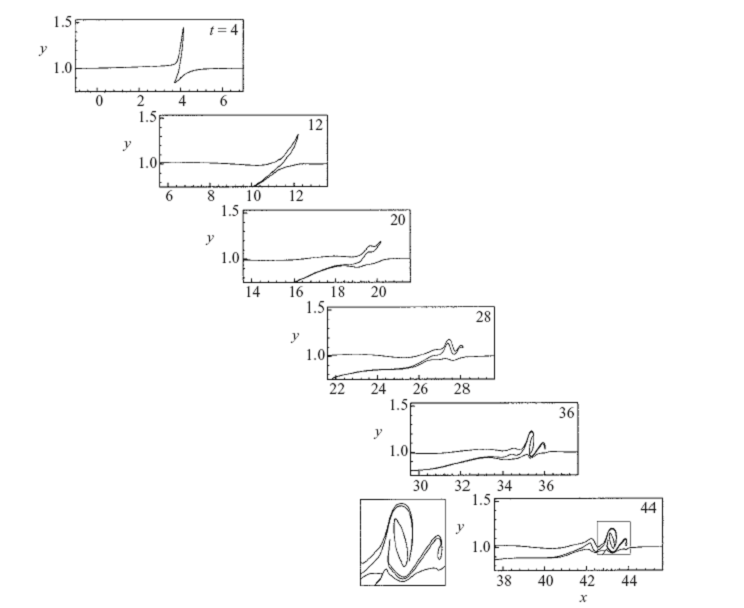Research / Mechanics in Biology & FluidsTurbulent Mixing
An actual turbulent boundary layer (from Falco - 1977) looks like this...

The upper arrow points to a thin tendril of white fluid surrounding a core of white & black fluid; the arrow beneath it shows a thin channel of black fluid. Below is our simulation of the development in time of this type of flow. At time 44, we see the same kind of turbulent signature, in which a wisp of vortical fluid curls around a region of vortical and irrotational flow, undercut by a thin channel of irrotational flow. Here, a simple analysis is able to reproduce many of the complex features of turbulent mixing (J. Fluid Mech.485: 143-159 (2003).


